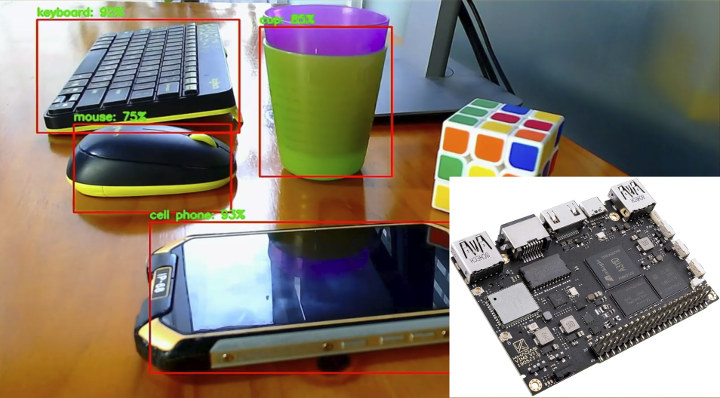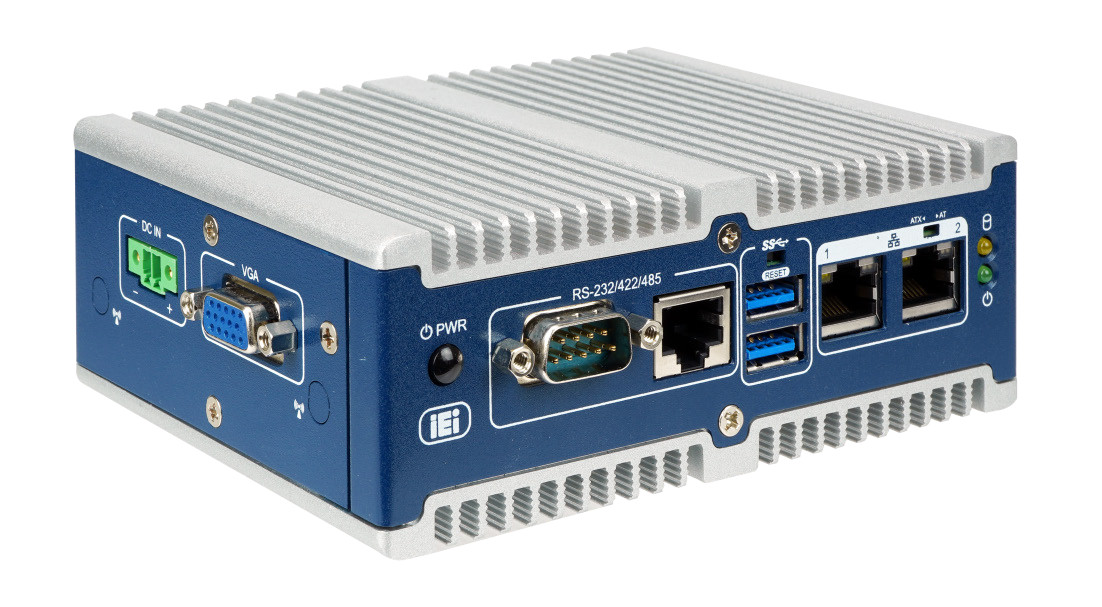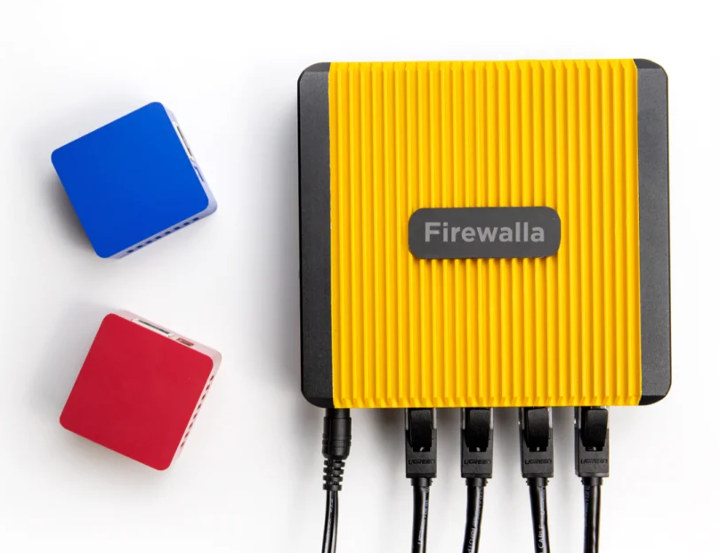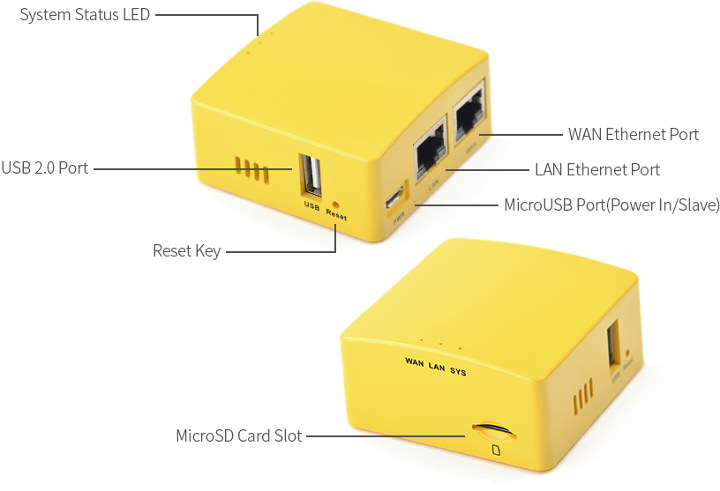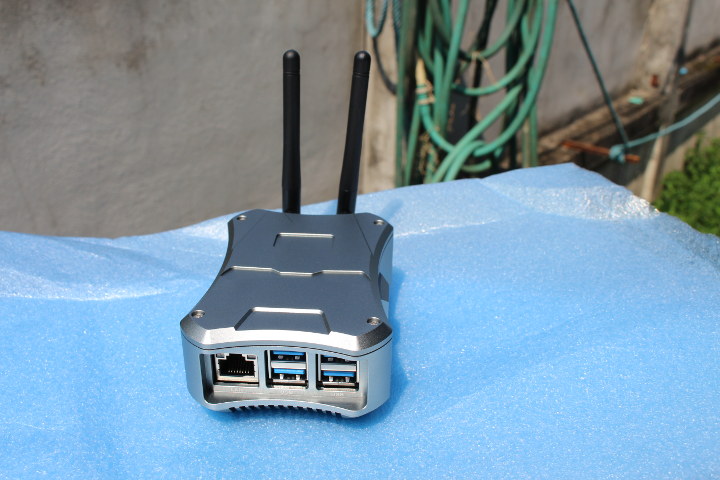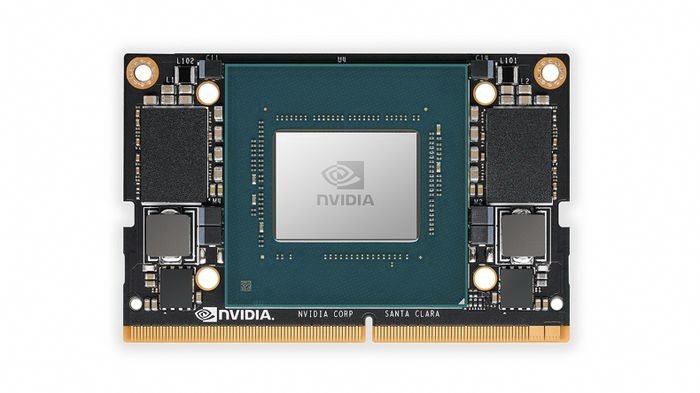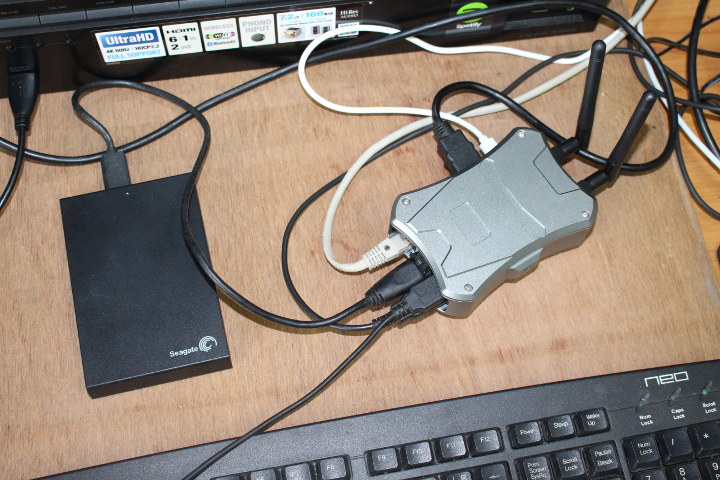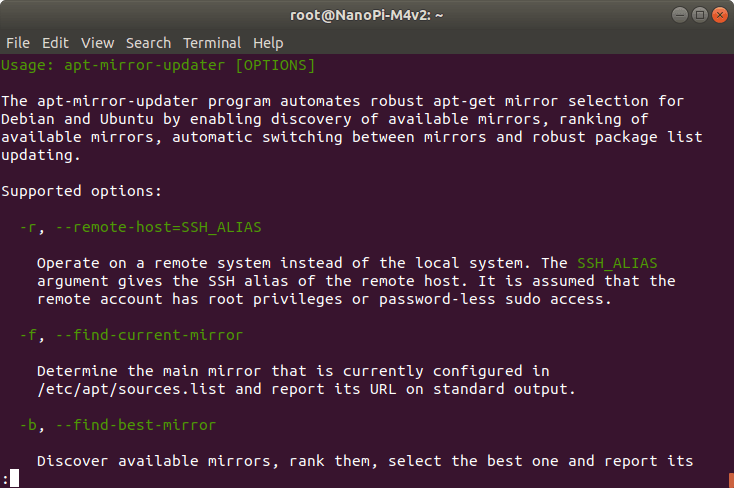Khadas VIM3 board based on Amlogic A311D processor with a 5TOPS Neural-network Processing Unit (NPU) launched last June. We’ve reviewed VIM3 with Android 9 shortly after launch, but until recently it was not possible to leverage the NPU since the software was not quite ready yet. The goods news is that Khadas has now released the NPU toolkit for both VIM3, and the cheaper VIM3L boards. The NPU toolkit contains the following directory: docs – Model conversion documentation acuity-toolkit – Model conversion tools linux_sdk – Linux SDK android_sdk – Android SDK The toolkit works in host PCs running Ubuntu 16.04 or 18.04 with Tensorflow framework, and inference can run on both Linux and Android OS in Khadas VIM3/3L board. It includes an Inception v3 sample with 299×299 sample photos, among other demos. You’ll find documentation to get started with model conversion and inference in Linux on Khadas Wiki. You can […]
IEI ITG-100AI DIN-Rail Rugged mini PC Comes with a Myriad X AI Accelerator Module
Intel Myriad X vision processing unit was first introduced in 2017 as an upgrade to Myriad 2 VPU delivering up to 1 TOPS of neural compute performance. The new chip was eventually integrated into Intel Neural Compute Stick 2 launched late last year. We previously wrote about AAEON Boxer 8310AI family of Apollo Lake mini PCs featuring a Myriad X mPCIe module, but there’s now another company, namely Taiwan-based IEI, that has launched its own Myriad X powered rugged mini PC. Meet IEI ITG-100AI fanless AI embedded system. IEI ITG-100AI DIN-Rail Rugged mini PC Specifications: SoC – Intel Atom x5-E3930 dual-core Apollo lake processor @ 1.3GHz / 1.8 GHz (Turbo) with 12EU Intel HD Graphics 500; TDP: 6.5W System Memory: – 1x 204-pin DDR3L SO-DIMM slot pre-installed with 8 GB memory Storage – 128GB SATADOM, MicroSD slot, optional eMMC 5.0 flash up to 32GB. Display – 1 x VGA Connectivity […]
Firewalla Gold Intel-based Ubuntu Router Enables Multi-Gigabit Cyber Security (Crowdfunding)
We covered Firewalla based on NanoPi NEO board in mid-2018. The device is a tiny firewall, parental control, ad-blocker, and VPN appliance for end-users. Since then they’ve launched Firewalla Blue based on NanoPi NEO2 SBC with Gigabit Ethernet and a faster processor, and now the company has just introduced the even more powerful Intel-based Firewalla Gold. Firewalla Gold specifications: Processor – Unnamed intel 64-bit quad-core processor System Memory – 4GB RAM Storage – 32GB flash Connectivity 4x Gigabit Ethernet ports supporting over 3 Gbps in total, and up to 10 VPN connection at up to 120 Mbps aggregated bandwidth. WiFi 6 module (not sure optional or included) Misc – RTC Power Supply – DC barrel jack They may have designed a custom board this time, as I’m not sure which off-the-shelf SBC they may have used in their new product. The device runs Ubuntu Linux so the users will have […]
NanoPi R1S Dual Gigabit Ethernet Router Comes with 32-bit or 64-bit Arm Processor
FriendlyELEC launched NanoPi R1 SBC & Gateway earlier this year with Allwinner H3 processor, two Ethernet ports, as well as WiFi and Bluetooth connectivity. The design makes use of both Ethernet on the processor, but that also means on Gigabit Ethernet port had to be combined with a Fast Ethernet processor. The company has now added a USB to Gigabit Ethernet bridge to their latest NanoPi R1S board meaning it’s now a dual Gigabit Ethernet SBC, but with the caveat that the port behind the USB bridge is limited to USB 2.0 speed (480 Mbps), and with overhead the USB Ethernet bandwidth is around 330 Mbps. There are two versions of the board, namely NanoPi R1S-H3 and R1S-H5 with respectively Allwinner H3 32-bit processor, and Allwinner H5 64-bit processor. Apart from the different processors, both boards share the same PCBA and specifications: SoC NanoPi R1S-H3 – Allwinner H3 quad-core Arm […]
Giveaway Week – NanoPi M4V2 SBC & Metal Case Kit
Let’s finish giveaway week 2019 on a high with FriendlyELEC NanoPi M4V2 single board computer, and its metal case kit. The board features a Rockchip RK3399 processor with 4GB LPDDR4 RAM, and the metal case kit allows the addition of an NVMe M.2 SSD as well. I tested the mini PC with FriendlyCore Desktop based on Ubuntu 18.04, since at the time, Armbian was still not working with the updated board equipped with LPDDR4 memory, and Android requires an eMMC flash module which was not part of the kits I received. NanoPi M4V2 performed fairly well in the case, but the fan is quite noisy, and somehow the RAM bandwidth was almost half of the one in the earlier NanoPi M4 board with DDR3 memory, which is the opposite one would expect. Probably related to some software tweaks as explained in the comments section of the review. I received two […]
NVIDIA Jetson Xavier NX SoM Delivers up to 21 TOPS for AI Workloads at the Edge
NVIDIA has just announced Jetson Xavier NX system-on-module, with the company claiming it is the “world’s smallest, most powerful AI supercomputer for robotic and embedded computing devices at the edge” with a 70x45mm “Jetson Nano” form factor, and delivering either up to 14 TOPS at 10 Watts or 21 TOPS at 15 Watts. The company expects the module to be used in small commercial robots, drones, intelligent high-resolution sensors for factory logistics and production lines, optical inspection, network video recorders, portable medical devices, and other industrial IoT systems. Jetson Xavier NX specifications: SoC – NVIDIA Xavier with 6-core NVIDIA Carmel ARM v8.2 64-bit CPU, 6MB L2 + 4MB L3 caches, and a 384-core NVIDIA Volta GPU with 48 Tensor Cores, 2x NVDLA deep learning accelerators delivering up to 21 TOPS at 15 Watts System Memory – 8 GB 128-bit LPDDR4x @ 51.2GB/s Storage – 16 GB eMMC 5.1 flash Video […]
NanoPi M4V2 Kit Review – Part 2: FriendlyCore Desktop
We’ve already seen how to assemble NanoPi M4V2 metal case kit which offers an Arm mini PC solution with support for NVMe SSD. The new NanoPi M4V2 Rockchip RK3399 SBC is an evolution of the M4 board that brings faster LPDDR4 memory and adds power & recovery buttons. Since we’ve already tested several RK3399 SBC‘s and TV boxes, I planned to focus the review on thermal design evaluation (i.e. see how well the board cools), and see how memory bandwidth evolved from LPDDR3 to LPDDR4. I wanted to do so both with Linux and Android, since I could compare NanoPC-T4 (LPDDR3) benchmarks in Android. But this requires an eMMC flash module, and I don’t own any. So instead I planned to run Armbian because of support for armbian-monitor for nice temperature chart but it’s not working just yet, so instead I’ve done all tests with FriendlyCore Desktop (rk3399-sd-friendlydesktop-bionic-4.4-arm64-20190926.img) based on […]
Changing Ubuntu Apt Mirror from the Command Line, and the Lack of Arm64 Mirrors
When you install Ubuntu on a computer, you’d normally go through the installation ISO which guides you through a wizard where you select your location among other things, and that means you get connected to the mirror closest to your location allowing timely updates. But for those of us who flash Ubuntu images on Arm SBC’s, the mirror is normally fixed to the one set by the developer be it in China or Slovakia, or defaults to the US mirror. It still works, but it can be slower than necessary. In a computer, an easy way to change that from Ubuntu desktop to launch Software & Update program and change the download from field to a mirror in your country or neighboring country as shown below. But I’ve found myself mostly connecting to boards over SSH since it’s easier that way for reviews. One way to change the mirror would […]


